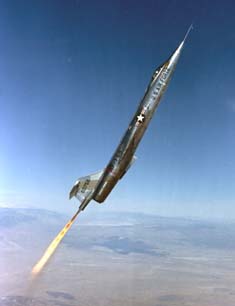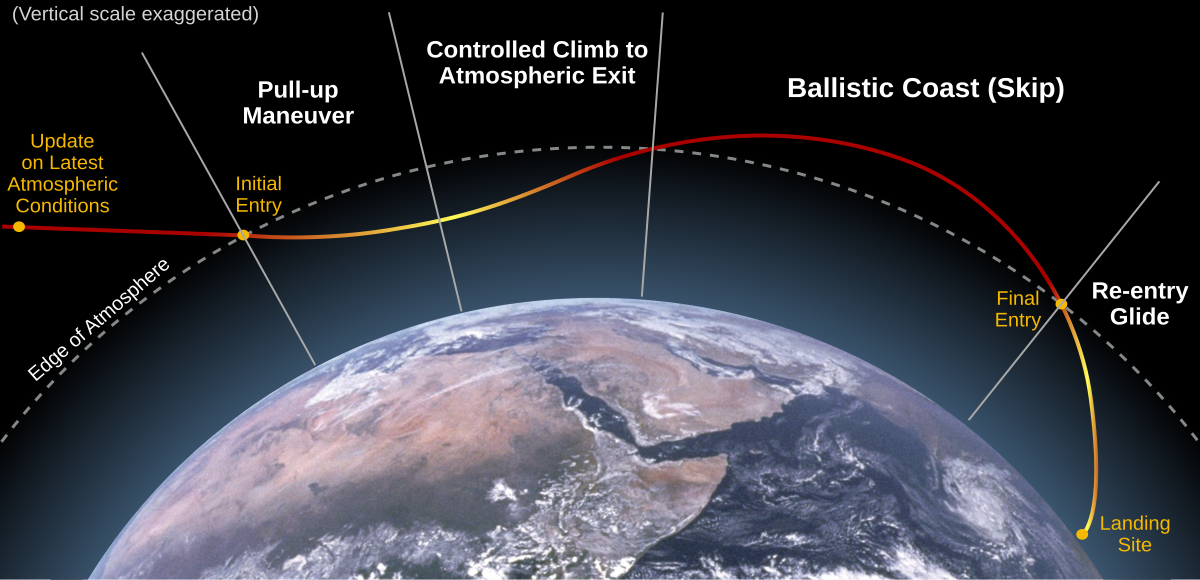Random facts about planes..
Discussion
I think it was flown in a ballistic zoom climb - which means that at the top of the climb the aircraft is really just continuing upward more like a rocket rather than an aeroplane.
NASA and the USAF conducted a number of flights using F-104s in a similar fashion - although they actually fitted a booster rocket motor to push the maximum altitude.

NASA and the USAF conducted a number of flights using F-104s in a similar fashion - although they actually fitted a booster rocket motor to push the maximum altitude.

CanAm said:
Ginetta G15 Girl said:
The major component of Drag on any wing is Induced Drag (also known as Lift Dependant Drag). This arises primarily from the formation of the wing tip vortices - basically the air from the higher pressure region below the wing tries to move into the lower pressure region above the wing by climbing over the wingtip. In so doing it forms a vortex which produces drag (it takes energy to form and maintain the vortex).
There are a number of ways of reducing these vortices (or delaying their onset) such as eliptical wings (eg Spitfire), wingtip tanks (eg Jet Provost), winglets (such as fitted to modern airliners) or, more commonly, the High Aspect Ratio Wing (ie a high length to chord ratio - long and thin) such as on the U2.
Given that the U2 was designed to operate at very high altitude in a region close to 'Coffin Corner' (ie where the Critical Mach Number and Stall Speed are close together), then a means of reducing drag such as a High Aspect Ratio Wing makes a lot of sense.
Is it true that a Lightning (BAC not the Lockheed one) got up to 88,000 to intercept a U2 and if so (i) how the hell did it manage and (ii) was the pilot in standard issue flying suit? There are a number of ways of reducing these vortices (or delaying their onset) such as eliptical wings (eg Spitfire), wingtip tanks (eg Jet Provost), winglets (such as fitted to modern airliners) or, more commonly, the High Aspect Ratio Wing (ie a high length to chord ratio - long and thin) such as on the U2.
Given that the U2 was designed to operate at very high altitude in a region close to 'Coffin Corner' (ie where the Critical Mach Number and Stall Speed are close together), then a means of reducing drag such as a High Aspect Ratio Wing makes a lot of sense.
Edited by Ginetta G15 Girl on Wednesday 19th April 13:06
Having had a look round one I would hate to have been the nav/photo guy lying face down while ejecting.
CanAm said:
Is it true that a Lightning (BAC not the Lockheed one) got up to 88,000 to intercept a U2 and if so (i) how the hell did it manage and (ii) was the pilot in standard issue flying suit?
Flt Lt Dave Roome achieved it in a Lightning F6 of 74 Sqn based at Tengah when doing a practice intercept on an USAF RB 57F on the 23rd Oct 1968. He achieved Mach 2 then zoom climbed the a/c.On 7th August 1979, Wg Cdr Brian Carroll who was at that time the CFI of the RSAF got to 87,300 in a Lightning F53 over the empty quarter of Saudi Arabia.
I know that in the early days Lightning pilots wore pressure jerkins and helmets but I think these had been binned by the late 1960s. Not good if you lost cabin pressure at those sorts of heights!
Markbarry1977 said:
Legend has it that ther is a photo somewhere from an RAF Canberra of the U2 taking pictures of somewhere. Friend of mine worked Canberras at Marham while I was on Tornando GR1/4 and said the published ceiling was shall we say under estimated.
Having had a look round one I would hate to have been the nav/photo guy lying face down while ejecting.
I should imagine that the photo' was taken using the vertical camera in a Canberra PR9, in which case the Nav was bolted into the coal hole in the (solid) nose.Having had a look round one I would hate to have been the nav/photo guy lying face down while ejecting.
Ginetta G15 Girl said:
CanAm said:
Is it true that a Lightning (BAC not the Lockheed one) got up to 88,000 to intercept a U2 and if so (i) how the hell did it manage and (ii) was the pilot in standard issue flying suit?
Flt Lt Dave Roome achieved it in a Lightning F6 of 74 Sqn based at Tengah when doing a practice intercept on an USAF RB 57F on the 23rd Oct 1968. He achieved Mach 2 then zoom climbed the a/c.On 7th August 1979, Wg Cdr Brian Carroll who was at that time the CFI of the RSAF got to 87,300 in a Lightning F53 over the empty quarter of Saudi Arabia.
I know that in the early days Lightning pilots wore pressure jerkins and helmets but I think these had been binned by the late 1960s. Not good if you lost cabin pressure at those sorts of heights!
Hats off to the Lightning pilots bearing in mind that the U2 pilots wore pressure suits.
Having recently heard a Mosquito pilot describing the difficulty of controlling his plane at 43,000 ft, it pales into insignificance when you find out that a U2 at 70,000 ft has only a 10 knot difference between the stall speed and Vne (Never exceed speed)!
nonsequitur said:
thebraketester said:
Fact of the day.
No one knows why a wing produces lift, they just do.
Is that true? Calling all pilots for an explanation please.No one knows why a wing produces lift, they just do.
NASA has a fairly informative series of web pages about it. https://www.grc.nasa.gov/www/k-12/airplane/lift1.h...
There are several links to click through too, including a number outlining the 'incorrect' theories.
In a nutshell though, lift is generated when a fluid is turned by a solid object. Change the fluid's direction, and the solid object moves in the opposite one. It gets more complex than that when you drill down into the theory but it's an overall picture of what's going on.
About the SR-71, two things come to my mind:
- I think Kelly's designation of the plane was RS71 but the President at the time read it the other way round and from them it was SR-71.
To be confirmed
- This part in the book written by a former pilot talking to the radio is very good about some pilots boasting about their groundspeed.
http://www.econrates.com/reality/schul.html
- I think Kelly's designation of the plane was RS71 but the President at the time read it the other way round and from them it was SR-71.
To be confirmed
- This part in the book written by a former pilot talking to the radio is very good about some pilots boasting about their groundspeed.
http://www.econrates.com/reality/schul.html
nonsequitur said:
thebraketester said:
Fact of the day.
No one knows why a wing produces lift, they just do.
Is that true? Calling all pilots for an explanation please.No one knows why a wing produces lift, they just do.
AVV EM said:
nonsequitur said:
thebraketester said:
Fact of the day.
No one knows why a wing produces lift, they just do.
Is that true? Calling all pilots for an explanation please.No one knows why a wing produces lift, they just do.
AVV EM said:
nonsequitur said:
thebraketester said:
Fact of the day.
No one knows why a wing produces lift, they just do.
Is that true? Calling all pilots for an explanation please.No one knows why a wing produces lift, they just do.
nonsequitur said:
AVV EM said:
nonsequitur said:
thebraketester said:
Fact of the day.
No one knows why a wing produces lift, they just do.
Is that true? Calling all pilots for an explanation please.No one knows why a wing produces lift, they just do.
Super Slo Mo said:
nonsequitur said:
AVV EM said:
nonsequitur said:
thebraketester said:
Fact of the day.
No one knows why a wing produces lift, they just do.
Is that true? Calling all pilots for an explanation please.No one knows why a wing produces lift, they just do.
Gassing Station | Boats, Planes & Trains | Top of Page | What's New | My Stuff




